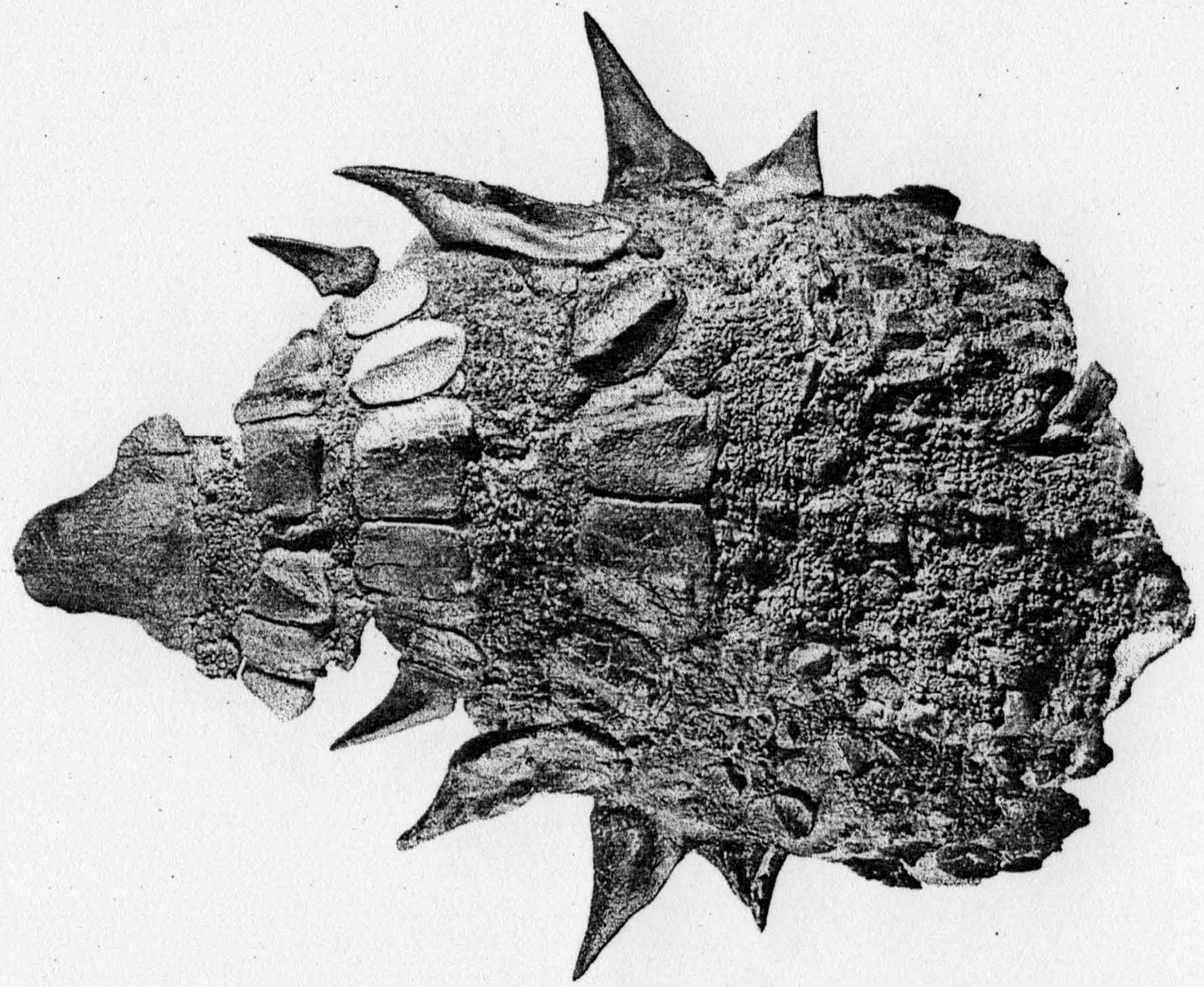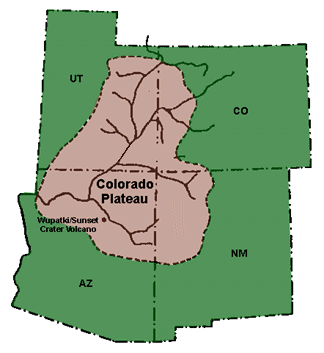|
Naturita Formation
The Naturita Formation is a classification used in western Colorado and eastern Utah for a Cretaceous Period sedimentary geologic formation. This name was "applied to the upper or carbonaceous part of Dakota Group" by R.G. Young in 1960, naming it for Naturita, Colorado.Young, R.G., 1960, Dakota Group of Colorado Plateau: Bulletin of the American Association of Petroleum Geologists, v. 44, no. 2, p. 156-194. The name is not used by U.S. Geological Survey authors, but has found growing acceptance by the Utah Geological Survey History of the name The formation in Utah and western Colorado overlies the Cedar Mountain and Burro Canyon Formations, and underlies the Mancos Shale formation, thus occupying a similar position of sedimentary strata that have widely been called Dakota Formation in Iowa, Kansas and Nebraska.Witzke, B.J., and Ludvigson, G.A., 1994, The Dakota Formation in Iowa and the type area, in Shurr, G.W., Ludvigson, G.A., and Hammond, R.H, editors, Perspectives ... [...More Info...] [...Related Items...] OR: [Wikipedia] [Google] [Baidu] |
Geological Formation
A geological formation, or simply formation, is a body of rock having a consistent set of physical characteristics (lithology) that distinguishes it from adjacent bodies of rock, and which occupies a particular position in the layers of rock exposed in a geographical region (the stratigraphic column). It is the fundamental unit of lithostratigraphy, the study of strata or rock layers. A formation must be large enough that it can be mapped at the surface or traced in the subsurface. Formations are otherwise not defined by the thickness (geology), thickness of their rock strata, which can vary widely. They are usually, but not universally, tabular in form. They may consist of a single lithology (rock type), or of alternating beds of two or more lithologies, or even a heterogeneous mixture of lithologies, so long as this distinguishes them from adjacent bodies of rock. The concept of a geologic formation goes back to the beginnings of modern scientific geology. The term was used by ... [...More Info...] [...Related Items...] OR: [Wikipedia] [Google] [Baidu] |
Naturita Fm
Naturita is a statutory town in Montrose County, Colorado, United States. The population was 485 at the 2020 census, down from 546 in 2010. The post office in Naturita was opened on October 21, 1881, under the name "Chipeta"; the name was changed to Naturita September 15, 1882, and has used that name since then. Naturita is a name derived from Spanish meaning "little nature". Geography The community is located in southwest Montrose County within the San Miguel River valley. The community is served by Colorado State Highways 97 and 141. Telluride is to the southeast via Highways 141 and 145. Montrose, the Montrose county seat, is to the northeast in air distance across the Uncompahgre Plateau but by paved roads. According to the United States Census Bureau, the town has a total area of , all of it land. The San Miguel River flows northwest from Naturita to the Dolores River, which continues northwest to the Colorado River in Utah. Climate The average low in January is ... [...More Info...] [...Related Items...] OR: [Wikipedia] [Google] [Baidu] |
Cedaromys
''Cedaromys'' ("Cedar mouse") is an extinct mammal which lived during the Upper Cretaceous, at the same time as many dinosaurs. It was a member of the also extinct order of Multituberculata. It's within the suborder of Cimolodonta, and a possible member of the Paracimexomys group. Species The species ''Cedaromys bestia'' was originally named ''Paracimexomys bestia'' in 1991,J. G. Eaton and M. E. Nelson. 1991. Multituberculate mammals from the Lower Cretaceous Cedar Mountain Formation, San Rafael Swell, Utah. Contributions to Geology, University of Wyoming 29(1):1-12 but later reassigned to ''Cedaromys'' by Eaton and Cifelli in 2001. Fossils have been found in Albian (late) - Cenomanian (early), (both Upper Cretaceous)-aged strata of the Cedar Mountain Formation in Utah Utah is a landlocked state in the Mountain states, Mountain West subregion of the Western United States. It is one of the Four Corners states, sharing a border with Arizona, Colorado, and New Mexico. It a ... [...More Info...] [...Related Items...] OR: [Wikipedia] [Google] [Baidu] |
Sauropod
Sauropoda (), whose members are known as sauropods (; from '' sauro-'' + '' -pod'', 'lizard-footed'), is a clade of saurischian ('lizard-hipped') dinosaurs. Sauropods had very long necks, long tails, small heads (relative to the rest of their body), and four thick, pillar-like legs. They are notable for the enormous sizes attained by some species, and the group includes the largest animals to have ever lived on land. Well-known genera include '' Apatosaurus'', '' Argentinosaurus'', '' Alamosaurus'', ''Brachiosaurus'', '' Camarasaurus'', '' Diplodocus,'' and '' Mamenchisaurus''. The oldest known unequivocal sauropod dinosaurs are known from the Early Jurassic. '' Isanosaurus'' and '' Antetonitrus'' were originally described as Triassic sauropods, but their age, and in the case of ''Antetonitrus'' also its sauropod status, were subsequently questioned. Sauropod-like sauropodomorph tracks from the Fleming Fjord Formation (Greenland) might, however, indicate the occurrence of the g ... [...More Info...] [...Related Items...] OR: [Wikipedia] [Google] [Baidu] |
Ankylosaur
Ankylosauria is a group of herbivorous dinosaurs of the clade Ornithischia. It includes the great majority of dinosaurs with armor in the form of bony osteoderms, similar to turtles. Ankylosaurs were bulky quadrupeds, with short, powerful limbs. They are known to have first appeared in North Africa during the Middle Jurassic, and persisted until the end of the Late Cretaceous. The two main families of ankylosaurians, Nodosauridae and Ankylosauridae primarily originated from the Northern Hemisphere (North America, Europe and Asia), but the more basal Parankylosauria originated from southern Gondwana ( South America, Australia and Antarctica) during the Cretaceous. Ankylosauria was first named by Henry Fairfield Osborn in 1923.Osborn, H. F. (1923). "Two Lower Cretaceous dinosaurs of Mongolia." ''American Museum Novitates'', 95: 1–1/ref> In the Linnaean classification system, the group is usually considered either a suborder or an infraorder. It is contained within ... [...More Info...] [...Related Items...] OR: [Wikipedia] [Google] [Baidu] |
Tyrannosaurid
Tyrannosauridae (or tyrannosaurids, meaning "tyrant lizards") is a family of coelurosaurian theropod dinosaurs that comprises two subfamilies containing up to fifteen genera, including the eponymous ''Tyrannosaurus''. The exact number of genera is controversial, with some experts recognizing as few as three. All of these animals lived near the end of the Cretaceous Period and their fossils have been found only in North America and Asia. Although descended from smaller ancestors, tyrannosaurids were almost always the largest predators in their respective ecosystems, putting them at the apex of the food chain. The largest species was ''Tyrannosaurus rex'', the most massive known terrestrial predator, which measured over in length and according to most modern estimates up to in weight. Tyrannosaurids were bipedal carnivores with massive skulls filled with large teeth. Despite their large size, their legs were long and proportioned for fast movement. In contrast, their arms were ... [...More Info...] [...Related Items...] OR: [Wikipedia] [Google] [Baidu] |
Ceratopsian
Ceratopsia or Ceratopia ( or ; Greek: "horned faces") is a group of herbivorous, beaked dinosaurs that thrived in what are now North America, Asia and Europe, during the Cretaceous Period, although ancestral forms lived earlier, in the Late Jurassic of Asia. The earliest known ceratopsian, '' Yinlong downsi'', lived between 161.2 and 155.7 million years ago.Holtz, Thomas R. Jr. (2011) ''Dinosaurs: The Most Complete, Up-to-Date Encyclopedia for Dinosaur Lovers of All Ages,'Winter 2010 Appendix./ref> The last ceratopsian species, '' Triceratops prorsus'', became extinct during the Cretaceous–Paleogene extinction event, . ''Triceratops'' is by far the best-known ceratopsian to the general public. It is traditional for ceratopsian genus names to end in "''-ceratops''", although this is not always the case. One of the first named genera was '' Ceratops'' itself, which lent its name to the group, although it is considered a ''nomen dubium'' today as its fossil remains have no disti ... [...More Info...] [...Related Items...] OR: [Wikipedia] [Google] [Baidu] |
Utah Geological Survey
The Utah Geological Survey is based in Salt Lake City, Utah, United States. It also has an office in Cedar City, Utah. It is a division of the Utah Department of Natural Resources and is an applied scientific agency, which creates, interprets, and provides information about Utah's geological environment, resources and hazards, in order to promote safe, beneficial, and wise land usage. Its departments and programs are: Editorial Services, Geologic Hazards Program, Energy & Minerals Program, Geologic Information and Outreach Program, Geologic Mapping Program, Ground Water and Paleontology Program, and the State Energy Program. The UGS has worked on countless projects in the state, including statewide geologic hazards maps, oil shale assessment, Great Salt Lake studies, fault trenching, and the Snake Valley/West Desert Groundwater Monitoring Well Project. In addition, recent research and general geologic information is given in teacher-friendly formats for anyone to use. His ... [...More Info...] [...Related Items...] OR: [Wikipedia] [Google] [Baidu] |
Palynostratigraphy
Palynology is the study of microorganisms and microscopic fragments of mega-organisms that are composed of acid-resistant organic material and occur in sediments, sedimentary rocks, and even some metasedimentary rocks. Palynomorphs are the microscopic, acid-resistant organic remains and debris produced by a wide variety of plants, animals, and Protista that have existed since the late Proterozoic.Neuendorf, K.K.E., J.P. Mehl, Jr., and J.A. Jackson, eds., 2005, ''Glossary of Geology'' (5th ed.). Alexandria, Virginia, American Geological Institute. 779 pp. It is the science that studies contemporary and fossil palynomorphs (paleopalynology), including pollen, spores, orbicules, dinocysts, acritarchs, chitinozoans and scolecodonts, together with particulate organic matter (POM) and kerogen found in sedimentary rocks and sediments. Palynology does not include diatoms, foraminiferans or other organisms with siliceous or calcareous tests. The name of the science and organisms is ... [...More Info...] [...Related Items...] OR: [Wikipedia] [Google] [Baidu] |
Front Range
The Front Range is a mountain range of the Southern Rocky Mountains of North America located in the central portion of the U.S. State of Colorado, and southeastern portion of the U.S. State of Wyoming. It is the first mountain range encountered as one goes westbound along the 40th parallel north across the Great Plains of North America. The Front Range runs north-south between Casper, Wyoming, and Pueblo, Colorado, and rises nearly 10,000 feet above the Great Plains. Longs Peak, Mount Blue Sky, and Pikes Peak are its most prominent peaks, visible from the Interstate 25 corridor. The area is a popular destination for mountain biking, hiking, climbing, and camping during the warmer months and for skiing and snowboarding during winter. Millions of years ago, the present-day Front Range was home to ancient mountain ranges, deserts, beaches, and even oceans. The name "Front Range" is also applied to the Front Range urban corridor, the populated region of Colorado and Wyoming ... [...More Info...] [...Related Items...] OR: [Wikipedia] [Google] [Baidu] |
Colorado Plateau
The Colorado Plateau is a physiographic and desert region of the Intermontane Plateaus, roughly centered on the Four Corners region of the Southwestern United States. This plateau covers an area of 336,700 km2 (130,000 mi2) within western Colorado, northwestern New Mexico, southern and eastern Utah, northern Arizona, and a tiny fraction in the extreme southeast of Nevada. About 90% of the area is drained by the Colorado River and its main tributaries: the Green, San Juan, and Little Colorado. Most of the remainder of the plateau is drained by the Rio Grande and its tributaries. The Colorado Plateau is largely made up of high desert, with scattered areas of forests. In the south-west corner of the Colorado Plateau, nicknamed High Country, lies the Grand Canyon of the Colorado River. Much of the Plateau's landscape is related to the Grand Canyon in both appearance and geologic history. The nickname "Red Rock Country" suggests the brightly colored rock left bare to t ... [...More Info...] [...Related Items...] OR: [Wikipedia] [Google] [Baidu] |




